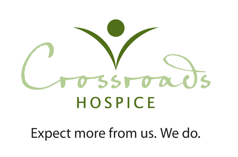No Comment
 Don’t you hate when people say “no comment?” If the person is in front of a camera, we can tell a lot by the environment, the question, and body language. But what about “no comment” in print? I have never used those words, but after reading the Washington Post article “Terminal neglect? How some hospices decline to treat the dying” (May 3, 2014, Peter Whoriskey and Dan Keating), I may reevaluate my position.
Don’t you hate when people say “no comment?” If the person is in front of a camera, we can tell a lot by the environment, the question, and body language. But what about “no comment” in print? I have never used those words, but after reading the Washington Post article “Terminal neglect? How some hospices decline to treat the dying” (May 3, 2014, Peter Whoriskey and Dan Keating), I may reevaluate my position.
The first Washington Post article in a hospice series, “Hospice firms draining billions from Medicare” (December 26, 2013), was filled with so many distorted facts I felt compelled to contact Mr. Whoriskey. We talked for more than an hour. At the end, Mr. Whoriskey indicated he had a lot of thinking to do and might not continue his three-part series. When this second installment came out, I felt betrayed. I want to set the record straight.
This recent article focuses on two levels of care, continuous and inpatient, and the lack of willingness of some providers to provide this care to patients in crisis. Readers may not realize the hospice benefit is designed to be primary caregiver support. That means hospices give care to the patient and support those considered primary caregivers; whether a nursing home, assisted living facility, or family members at home. When a patient enters a crisis, the hospice may deem it necessary to utilize continuous or inpatient care.
The problem with the article starts with the first example. While I could not agree more that the nurse with Ms. Choi should have never left — and I will not dispute the fact that her experience was tragic — it is important to note that, based on the reporting, her level of care would not have qualified for continuous care. “Her mother died within an hour.” This sentence, while powerful, points to the fact that Ms. Choi had not been in crisis for 8 hours. Admittedly, I have not reviewed any of the other information, but using this story as an example, we can examine this level of care more intently.
Continuous care is defined as a minimum of 8 hours in a 24-hour period (midnight to midnight) in which 51% of those hours are delivered by a registered nurse and the other 49% delivered by a registered nurse, licensed practical nurse, or nurse’s assistant. If indeed Ms. Choi died within the hour, then it is very possible that she would not have qualified. If a patient started into a crisis after 4:00 pm, all hours given to the patient until midnight would not qualify as continuous care. If a patient was receiving continuous care at midnight but died prior to 8:00 am, those hours would also not qualify. It is a rule that the act of dying does not qualify as an emergency nor crisis for the hospice to be able to utilize continuous care.
If continuous care could be utilized in such a manner as to care for the dying or their families during the eminent stages of death, it is my belief the figures quoted in the article would be drastically different. It is interesting the other important staff, i.e. chaplains, social workers, and bereavement counselors, are not considered essential or qualify for use during continuous care regardless of the symptoms or patient need.
The “$900 per day paid for continuous nursing at home” quoted is misleading. Continuous care is an hourly rate (using his example) equaling $37.50/hour. Only if a patient’s symptoms remained out of control from midnight to midnight…AND over 12 hours were performed by a registered nurse, AND the remainder provided by a registered nurse, licensed practical nurse, or nurse’s assistant…would a hospice provider receive $900.
So to my quote, “Perry Farmer, the founder of Crossroads Hospice, a successful mid-size chain, said his agencies provide continuous care when necessary, but it’s a ‘money-loser for us…[Financially,] it just doesn’t work out.’” The entire quote centered on my statements related to the fact that if the goal is to make money utilizing continuous care it just doesn’t work out. Crossroads Hospice provides care at the time of death, strives to be there at the time of death, and control the patient and/or the families’ symptoms. Even though chaplains, social workers, and bereavement counselors cannot be utilized for continuous care, we believe in utilizing whatever staff is necessary, regardless of our ability to bill Medicare. Our promise to a patient is “you shouldn’t die in pain and you shouldn’t die alone,” not that you shouldn’t die in pain and you shouldn’t die alone, if it’s billable at a profit.
If the readers see no difference in the actual conversation and interpretation, then I owe Mr. Whoriskey my deepest apologies.
While I would love to continue to discuss other topics regarding hospice care, if you are a reporter, I may say “no comment.”
Perry Farmer
President, Crossroads Hospice
Our response was submitted to the Washington Post for its Op-Ed section but was not published. We feel strongly it is important to set the record straight about hospice care and appreciate the opportunity to share the facts with our Crossroads Hospice family, our patients and their families, and the public. Visit www.crossroadshospice.com to learn more about our philosophy of providing hospice care.
If you found this information helpful, please share it with your network and community.
Copyright © 2015 Crossroads Hospice. All rights reserved.

